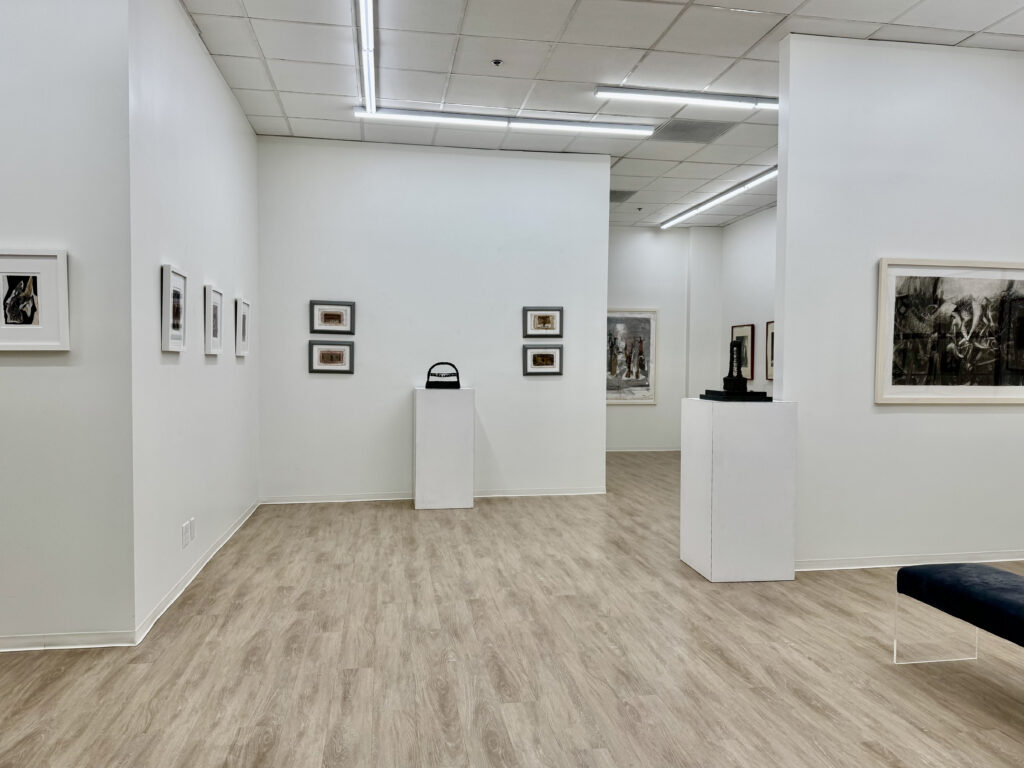
At first, upon entering the gallery, I drifted until I saw monochromatic etchings, which, at the time, lacked this optimistic association. Instead, they appeared as fusing, interlocking shapes, poking upward like inverted roots or clasped together with barnacled adhesion, rising from flat, lined surfaces like twisted paladins in a mad hatter’s chess game.
Upon revisiting the etchings, I saw, in my own morbid way, a reminder of the fires that have ravaged the LA/Altadena area. Or, perhaps not so morbid, I thought later, for it was hard not to make that association as a SoCal resident—especially as Nama’s charcoal stems (those created in collaboration with the poet Yves Bonnefoy) could easily conjure up images of a denuded, blackened tree or a house reduced to a leaning post or two.
Yet through crosshatching and background shading, Nama creates a contrasting, subtle energy. A luminous, chiaroscuro lighting sets off an internal dynamism, imbuing these forms—and their ashen nature—with connotations of both destruction and rebirth, as if an ember of life glowed within.
In other works, Nama uses color in ways both florid and Spartan, daubing inside the branching shapes like corpuscles surging through an artery.
Nama has collaborated with many notable artists over the years, including the late filmmaker George Romero (of Night of the Living Dead fame). On another gallery wall, a story called Liberator is framed and illustrated. The words are Romero’s, concerning an old man’s memory of the Golem he created from river mud to take vengeance on his presumably Nazi oppressors—until the Allied liberators arrive, at which point the Golem submits to its own immolation. The framed etchings that accompany the text have a dark, molded aspect that indeed suggests river mud shaped into being. It seems a perfect pairing of word and illustration. I have no doubt that Romero intended the Golem of his story to be at least partially inspired by the 1915 German Expressionist film.
For legal and estate reasons, Romero’s tale can only be read in Rutberg’s gallery.
On display until May 17, the retrospective seems to harken back to a midcentury sensibility and craftsmanship that verges on the mesmerizing at times.
Jack Rutberg Fine Arts is located at 606 South Lake and is open Tuesdays through Saturdays.


